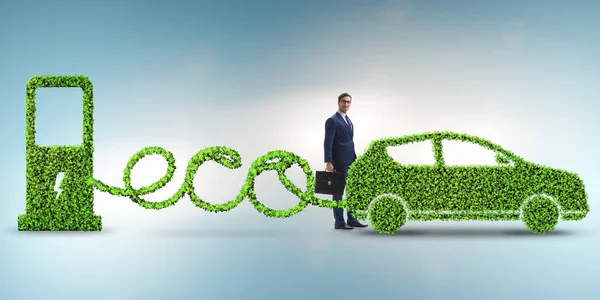Promote environmentally responsible driving behaviours
Encourage eco-friendly driving practises as one of the most efficient strategies to lower a fleet’s carbon impact.
Conducting driver training courses for your workers is a wonderful approach to do this.
Provide advice and recommendations on how to reduce idling, drive at safe speeds, and prevent excessive acceleration and braking. These initiatives may help to cut fuel usage and carbon emissions. It’s also critical that your staff understand how to manage and maintain their cars, including grey fleet vehicles.
Eco-driving is beneficial to both car owners and the environment.
Did you know that your driving style, not simply distance and time, influences how much fuel your vehicle is using?
Yet, environmental driving may save several hundred pounds on fuel per vehicle each year and is an important aspect of a fleet transformation programme.
What exactly is eco-driving?
Eco-driving is a way of driving a vehicle with the purpose of consuming less fuel and having a lower environmental effect.
What can eco-driving accomplish?
Aggressive driving, can lower your miles per gallon by 15-30% (at motorway speeds) or 10-40%. (in stop-and-go traffic.).
When fuel prices rise or your business is trying to reduce its emissions, it is worthwhile to implement eco-driving practises to reduce your fleet’s carbon impact.
The following are the some advantages of eco-driving:
- Reduced fuel consumption and expenses
- Decrease CO2 emissions from exhaust.
- Improve vehicle safety by reducing vehicle wear.
Control your speed.
Each fleet driver can make small changes each day, by maintaining a consistent speed and consider utilising cruise control. Allowing your speed to dip somewhat as you ascend a hill might also be advantageous; you will gain speed on the other end.
Eliminate carrying extra weight in your vehicle
More fuel used to drive your car, the heavier it is.
Transporting heavy objects and equipment can still have a detrimental impact on fuel efficiency.
Look to see if there is any equipment that can be removed from the interior or top of your car that you will not be using that day.
When acquiring a new vehicle, choose a smaller-engine, fuel-efficient or fuel type model that meets the demands of your grey fleet.
Improve your fleet routes
Combine many excursions into one and plan your itinerary ahead of time.
Keep an eye on traffic reports, take notice of roadworks, and avoid routes that pass through congested intersections or cities if feasible.
You may avoid idling, lessen the danger of forceful braking, and cut your travel time by optimising your route.
If you have a fleet of cars, consider employing technological solutions to help with dispatch and routing to better organise your resources.
Idling should be avoided
Did you know that idling your vehicle for more than 10 seconds consumes more fuel than turning it off and then back on?
If you intend to be idling for more than 60 seconds while not driving, turn off your car.
If a mixed fleet and in your heavy goods vehicles, normally temperature management is a key reason for idling.
Instead of idling consider investing in cab or bunk warmers, coolant heaters, storage air conditioners, or another piece of idle reduction equipment.
What is the significance of eco-driving?
Fixing wasteful driving habits benefits both grey fleet & business fleets and the environment. Safe2Drive Solutions actively promotes green fleet ideas to ensure fleet sustainability & best practises are encouraged.

